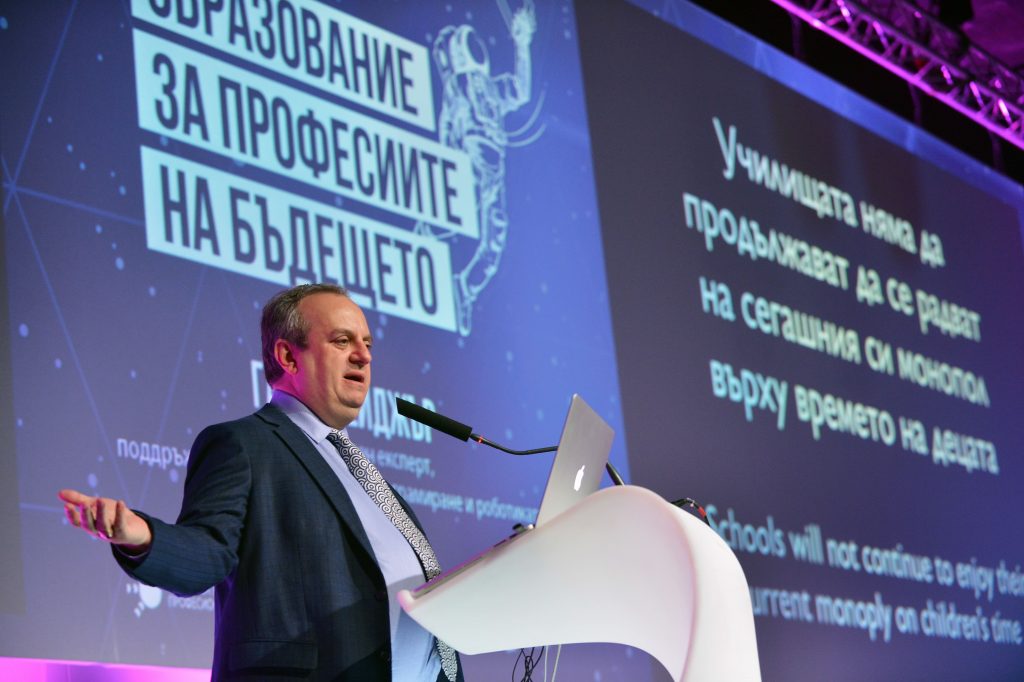EdTech Leader Celebrates the 50th Anniversary of Logo and Life of Seymour Papert at ISTE 2017
Lessons for Learning and “Coding” based on fifty years of practice
Educational pioneer and teacher educator Gary Stager, Ph.D. to speak at his 30th International Society for Technology in Education annual Conference in San Antonio, Texas on June 27th.
In 1967, Seymour Papert, Cynthia Solomon, Wally Feurzig and a small group of colleagues created the first programming language for children, Logo, at a time when few adults had ever seen a computer. Logo combined Piagetian notions of knowledge construction, artificial intelligence, cutting edge mathematics, “kid power,” and progressive ideals.
Soon after the invention of Logo, Papert and Solomon began developing activities, microworlds, and pedagogical techniques for bestowing children with agency over the computer and an increasingly complex, technologically successful world. This early work, a half-century ago, created the foundation for the maker movement, 1:1 computing, robotics for children, computer-science-for-all, standards for classroom computer learning that few achieve even today. From its birth, Logo was a movement as well as a programming language that continues to evolve. The expectation was and is that teachers are capable of creating contexts in which children explore powerful ideas; such learning experiences would also inform school reform.

Gary Stager worked with Papert and Solomon since the mid-1980s and has been one of the leading advocates for Logo use in classrooms around the world. He has authored books on Logo programming, edited ISTE’s Logo Exchange journal, founded ISTE’s SIGLogo (special interest group), and teaches thousands of educators each year to teach children to program in Logo. He was the principal investigator for Dr. Papert’s last institutional research project and is the curator of the online Papert archives site, The Daily Papert. (dailypapert.com)
During this exciting ISTE presentation, Dr. Stager will share Logo’s legacy and continuing impact around the world via programming examples, historic video clips, student projects, contemporary case studies, and a provocative vision for the future.
Logo at 50: Children, Computers and Powerful Ideas
- Tuesday, June 27, 4:45–5:45 pm CDT
- Building/Room: Hemisfair Ballroom 2
Other presentations by Gary Stager
Before You Build a Makerspace: Four Aspects to Consider [with Sylvia Martinez]
- Tuesday, June 27, 1:45–2:45 pm CDT
- Building/Room: 302A
Making and makerspaces in education conjure up images of students deeply engaged in real, relevant, technology-rich projects. But there are four distinct aspects to unpack when creating a maker program: Space, culture, process and pedagogy. This session will help education leaders build a roadmap for their school or district.
Learning From the Maker Movement in a Reggio Context
- Wednesday, June 28, 8:30–9:30 am CDT
- Building/Room: 220
Discover how the Reggio Emilia Approach that is rooted in a half-century of work with Italian preschoolers and includes profound, subtle and complex lessons from intensely learner-centered classrooms, is applicable to all educational settings. Learn what “Reggio” teaches us about learning-by-making, making learning visible, aesthetics and PBL.

About Gary S. Stager, Ph.D. cmkfutures.com
Gary Stager is one of the world’s leading experts and advocates for computer programming, robotics and learning-by-doing in classrooms. In 1990, Dr. Stager led professional development in the world’s first laptop schools and played a major role in the early days of online education. In addition to being a popular keynote speaker at some of the world’s most prestigious education conferences, Gary is a journalist, teacher educator, consultant, professor, software developer, publisher, and school administrator. He is the founder of the Constructing Modern Knowledge summer institute for educators and CEO of Constructing Modern Knowledge Press.
 Dr. Stager is co-author of Invent To Learn – Making, Tinkering, and Engineering in the Classroom, called the “bible of the maker movement in schools,” by Larry Magid of CBS and The San Jose Mercury News.
Dr. Stager is co-author of Invent To Learn – Making, Tinkering, and Engineering in the Classroom, called the “bible of the maker movement in schools,” by Larry Magid of CBS and The San Jose Mercury News.
When Jean Piaget wanted to better understand how children learn mathematics, he hired Seymour Papert. When Dr. Papert wanted to create a high-tech alternative learning environment for incarcerated at-risk teens, he hired Gary Stager. This work was the basis for Gary’s doctoral dissertation and documented Papert’s most-recent institutional research project.
Dr. Stager’s work has earned a Ph.D. in Science and Mathematics Education and a Grammy Award.
Gary is also on the advisory board of the NSF-funded project, BJC4NYC: Bringing a Rigorous Computer Science Principles Course to the Largest School System in the US. Dr. Stager also maintains the world’s largest archive of text and multimedia by Seymour Papert at The Daily Papert.